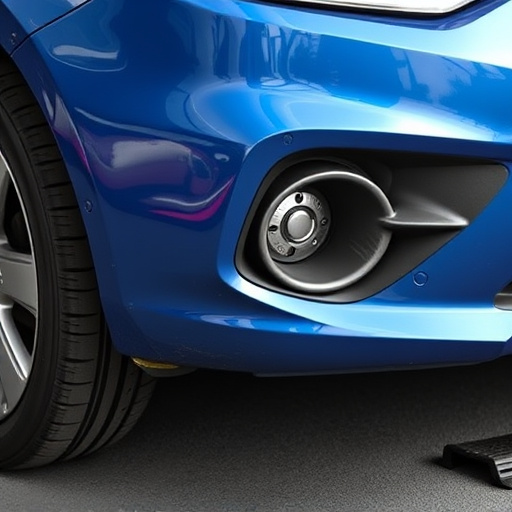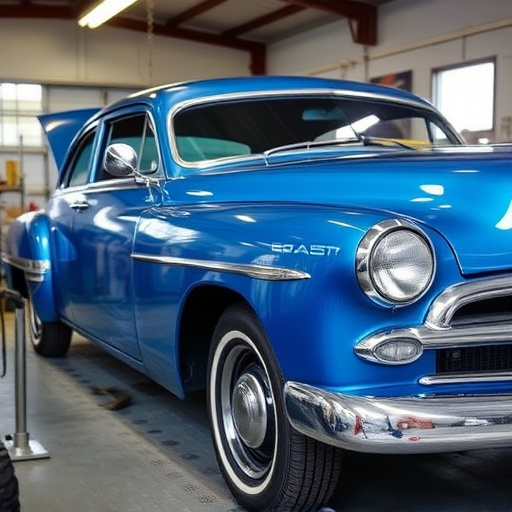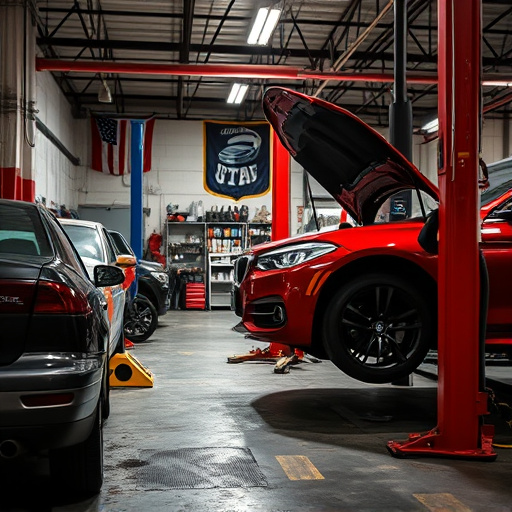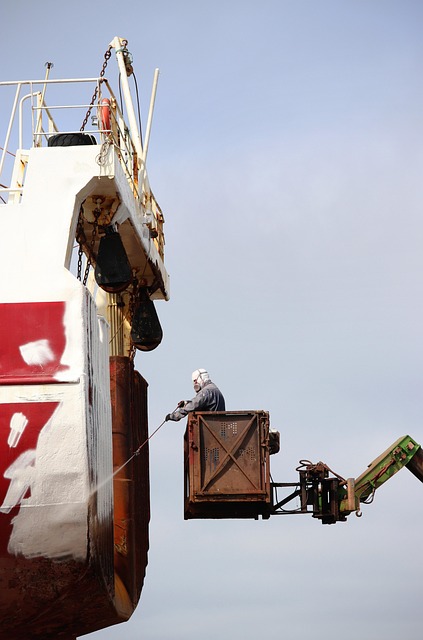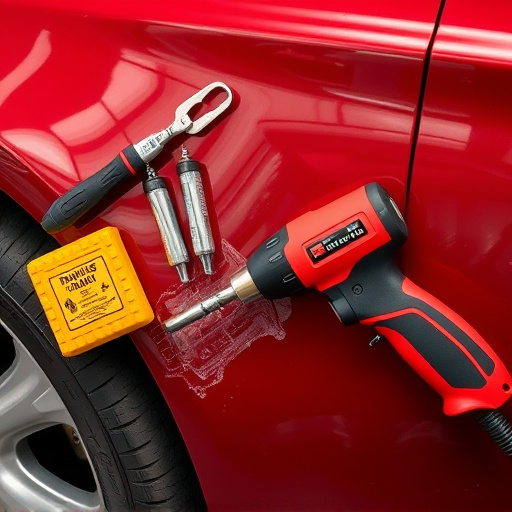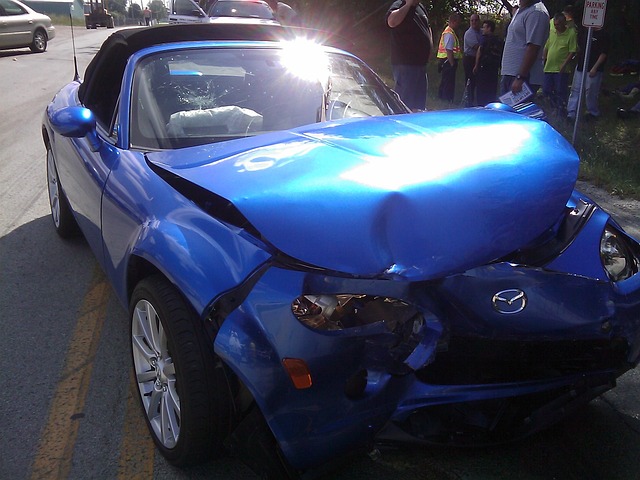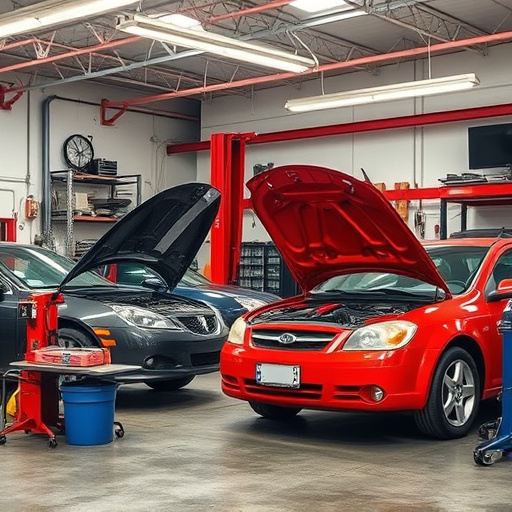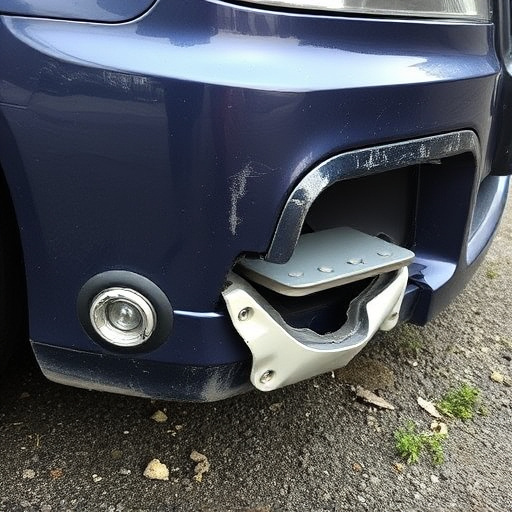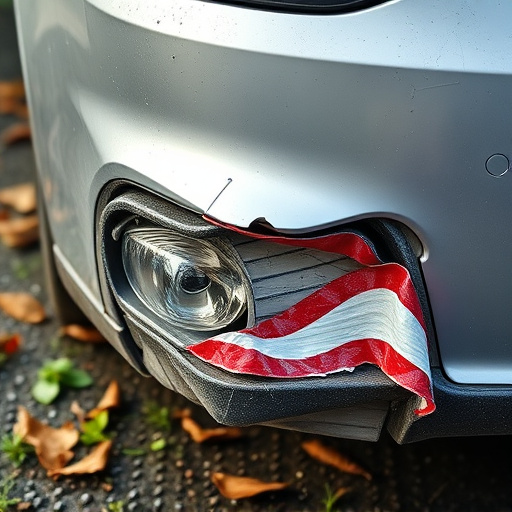Paintless Dent Repair (PDR) for aluminum panels has revolutionized car body repair, offering an innovative, cost-effective, and environmentally friendly method to remove dents, dings, and creases without damaging paintwork. Ideal for minor to moderate damage, PDR preserves the original factory finish and structural integrity of aluminum bodywork, enhancing vehicle aesthetics and value. However, severe damage may require traditional auto frame repair techniques, with the optimal choice depending on extent of damage, desired restoration level, and cost.
“Considering repairs for your aluminum panel damage? PDR (Paintless Dent Repair) offers a specialized solution. This non-invasive technique is ideal for preserving the original finish of aluminum panels, making it a preferred choice over traditional bodywork for various reasons.
This article explores when PDR for aluminum panels is the best option, delving into its benefits, applications, and how it stacks up against conventional repair methods. Learn when to choose PDR for efficient, cost-effective, and aesthetically pleasing results.”
- Understanding PDR for Aluminum Panels: Benefits and Applications
- When to Opt for PDR Over Traditional Bodywork Repairs
- The Pros and Cons: Comparing PDR with Conventional Repair Methods for Aluminum Panels
Understanding PDR for Aluminum Panels: Benefits and Applications
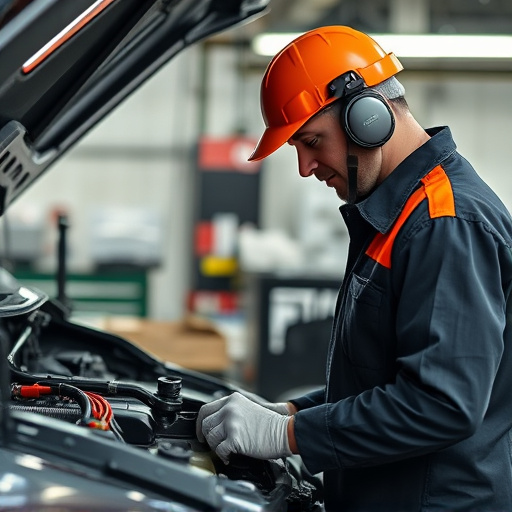
PDR for aluminum panels, or Paintless Dent Repair, is a specialized technique that has revolutionized the automotive industry. It’s an innovative approach to car body repair, particularly suitable for aluminum components, offering numerous advantages over traditional car bodywork methods. By using advanced tools and techniques, PDR for aluminum panels allows for the removal of dents, dings, and creases without damaging the original paintwork or requiring extensive repainting. This process is highly efficient, cost-effective, and environmentally friendly, making it a preferred choice for both professional bodyshops and DIY enthusiasts.
This method’s versatility extends to various applications, including car body restoration projects, where it can revive old vehicles with minimal disruption to their original finish. It’s especially beneficial for aluminum panels due to the material’s unique properties; aluminum is lightweight yet durable, making it a popular choice in modern vehicle design. PDR preserves the integrity of these panels while ensuring a seamless repair that matches the car’s overall aesthetics, ultimately enhancing its value and longevity.
When to Opt for PDR Over Traditional Bodywork Repairs
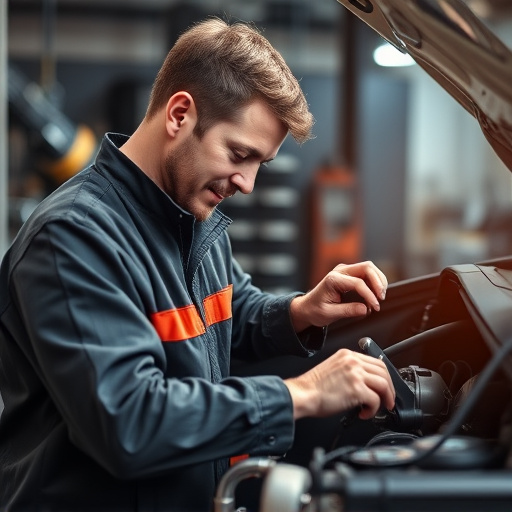
When faced with aluminum panel damage, such as dents or dings, opting for PDR (Paintless Dent Repair) over traditional bodywork repairs can be a game-changer. Unlike conventional repair methods that often involve extensive painting and panel replacement, PDR is a more specialized, non-invasive approach designed specifically for metal types like aluminum. It’s an ideal solution when the damage is primarily surface-level, affecting only the exterior finish without compromising the structural integrity of the panels.
PDR is particularly advantageous in cases where the car has sustained minor to moderate collisions or incidental damage. For example, a light bump against a parking barrier or a small stone chip can often be effectively repaired using PDR techniques. This method not only preserves the original factory finish but also minimizes disruption to the vehicle’s overall design and performance. Moreover, PDR is typically faster and more cost-effective than traditional bodywork repairs, making it an attractive option for those seeking swift car collision repair or wanting to avoid extensive auto maintenance procedures.
The Pros and Cons: Comparing PDR with Conventional Repair Methods for Aluminum Panels
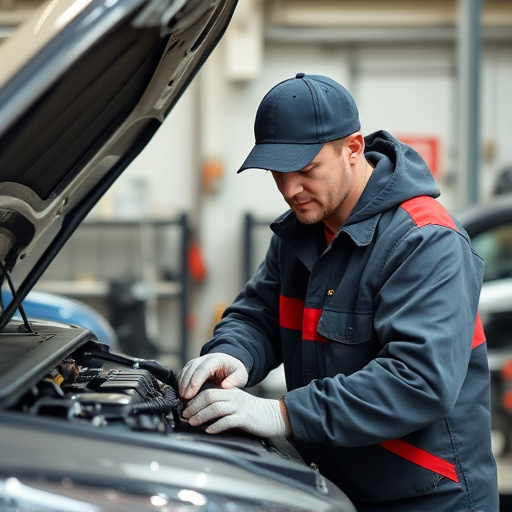
When comparing PDR for aluminum panels to conventional repair methods, several key advantages stand out. PDR (Paintless Dent Repair) is a non-invasive technique that preserves the original factory finish and structural integrity of the panel. This not only saves on material costs but also eliminates the need for extensive painting and finishing work, making it faster and more cost-effective for car repair services focused on aluminum bodywork. Additionally, PDR can restore damaged panels to their pre-dent condition, maintaining the vehicle’s overall aesthetic appeal.
However, conventional repair methods offer their own set of benefits. For instance, in cases of severe damage or panel misalignment, traditional auto frame repair techniques may be necessary to ensure structural safety and precision. While they might involve more labor and material costs, these methods are proven for restoring vehicles to factory specifications, especially when dealing with complex body panels. Ultimately, the choice between PDR for aluminum panels and conventional repairs depends on the extent of damage, desired restoration level, and cost considerations, making it crucial for car bodywork services to assess each case individually.
PDR for aluminum panels offers a specialized, cost-effective, and efficient repair solution compared to traditional bodywork. Its benefits are particularly pronounced when dealing with modern aluminum car bodies, ensuring both structural integrity and aesthetic restoration. By choosing PDR over conventional methods, car owners can save time, money, and potentially extend the lifespan of their vehicle’s exterior, making it a compelling option for various repair scenarios.
